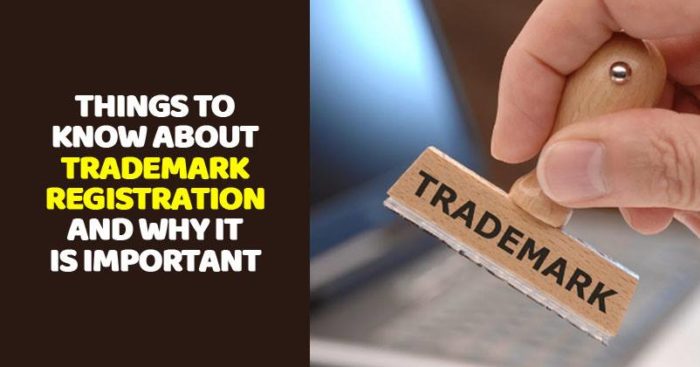Essential Requirements for Trademark Registration in Cochin
Introduction
The Trade and Merchandise Marks Act, 1958 has a scheme of essential requirements for the registrability of a trademark. This act contains different strategies in it. But this Act was amended in 1999 as Trademarks Act, 1999 which has completely different from previous act. Section 9 of Trade and Merchandise Marks Act, 1958 provides certain categories of marks which were registrable and any other categories of marks were registrable if it was distinctive. The registrable marks were enumerated.
The amended Act Trademarks Act 1999 describes the requirement of registrability in its definition itself and mentions the marks which are not registrable in sections 9 and 11. Section 9 of Trademarks Act, 1999 describes as absolute grounds for refusal of registration. As well as the section 11 of trademarks Act 1999 mentions as relative grounds for refusal of trademark registration.
Section 9 of Trademarks Act, 1999 includes refusal of identity or similarity with earlier trademarks i.e. prior trademarks and identity or similarity in the goods concerned. It also includes an earlier trademark and similar trademark in well-known trademark, although the goods or services are not similar.
Conditions of registrability
As stated in the Trademarks Act, 1999, the trademark is registrable if it satisfies the following conditions:
- The mark should be capable of being represented graphically which all the categories of mark included in the definition of mark under section 2 of the trademarks Act, 1999.
- The mark should be distinguishing the goods or services of one person from those of others.
- The mark should be used in relation to goods or services for the purpose of indicating or as to indicate a convention in the course of trade between the goods or services and the proprietor having the rights of permitted use to use the mark.
- The mark need not mentions the identity of the person using the mark.
- The certification of trademark and collective mark which are included in the term of Trademark.
Capable of distinguishing
Capable of distinguishing is nothing but a matter of interpretation. The Trade and Merchandise Act, 1958 differentiate the expressions distinctiveness and distinguishing. But still now, it may be doubtful because of the expression given by the former Act. “Capable” is used not in the negative sense of “not incapable” or “unrealized capacity”. It is used in the positive sense of “able to” or “serves to distinguish”. It expresses a positive requirement that a sign must possess a capacity or ability to distinguish before it is elevated to the station of “Trademark”, it must possess a distinctive character. Section 1(1) of the U.K. Law imposes the positive requirement that a trademark must possess a distinctive character.
Distinctive character
A two dimensional pictorial mark being the image of a slug of striped toothpaste in class 03 for Toothpaste Limited to the colors dark blue and light blue as shown in the representation was refused the trademark registration. Why because it was already held that the mark was a mere representation of the goods in question and was not capable of distinguishing. There was no evidence of user. It may be accepted, if it was none of the combinations of stripes, speckles, and colors of the applicants get-ups was in itself sufficiently arresting to be likely to be taken as having trademark significance by the relevant consumer. Instead, these features were likely to be seen as the arrangement of the product itself, mere decoration or perhaps even as indicating the active ingredients of the toothpaste. For another example, an application to register the shapes of a bottle in classes 29 and 32 was refused on the ground that it lacked distinctive character. There was evidence of sales promotion and survey evidence. The registrar held that the mark has not become distinctive through use. Form the following points you can clearly understands the distinctive character in trademark registration.
- Where, inherent distinctiveness was concerned the registry had to find that the mark performed the function of identifying origin even before the public had been educated that was so used for that purpose.
- In the case of the shape of a container the relevant question was not whether the container would be recognized on being seen a second time but whether by itself its appearance would convey trademark significance to the average customer.
- The evidence of sales promotion did not show that there was any effort made to promote the shape of the bottle as having trademark significance.
- There was no evidence to show that at the date of the application, the applicant had done anything to educate the public that its bottles had trademark significance not that the public learned of such significance.
Test for capacity to distinguish under Trademarks Act, 1994 (U.K. Law)
A trademark must be capable of distinguishing goods or services of one undertaking from those of another so that it could fulfill its essential function namely, to guarantee that all goods bearing it originated under the control of a single undertaking which was responsible for the quality of the goods or services. For a sign to be capable of distinguishing for the purpose of trademark law the sign must indicate who the product or service came from and not merely tell the customer what the product or service was. Identifying a particular product that was only available from one source would indirectly identify the source also. This could lead the relevant public to treat as the proper name of the product or service that which its source intended should only be an indication of origin. The meaning of a word in a particular context was a question of fact and depends on the conclusions to be drawn from the evidence.
In determining the factual question whether a name, used for many years before the application to register, had the relevant capacity to distinguish, the correct answer would be indicated by the response to four questions.
- What was the product to which the word had been applied?
- Had the word been used exclusively in relation to that product?
- Had the word been used exclusively on the product by the proprietor as a designation or origin?
- Had the word come to be recognized as a designation of origin rather than an indication of type by the relevant public?
A sign which performed the essential function of a trademark might be validly registered notwithstanding the fact that it also had some technical or descriptive impact. But, that did not mean that a sign which overwhelmingly performed a descriptive or technical function could be validly registered. Such a sign was not capable of distinguishing within section 3 (1)(a) of the Act, even if there was some trademark recognition.
Revocation of registration
The distinctive character of a trademark (what made it in some way striking and memorable) was not likely to be analyzed by the average consumer but was nevertheless capable of analysis. It was for the Registrar, through the hearing officer’s specialized experience and judgment to analyze the visual, aural and conceptual qualities of the mark and make a global appreciation of its impact on the average consumer who normally perceived the mark as a whole and did not proceed to analyze its various details.
Registered word mark in stylized form
Use of the same mark in block capitals equivalent to use of the trademark under section 46 of the U.K. Act of 1994 use in block capitals of marks registered in stylized form did not change the distinctive character of the registered mark.
The expressions SURF UNLIMITED and SURF UNLIMITED in respect of a wide range of services in class 38 were refused trademark registration by the registrar on the grounds that they served in trade to designate the kind or quality of the services and were devoid of distinctive character and not registrable under Section 3 (1)(c) and section 3 (1) (b) of the Act of U.K. Law, 1994.
Various categories of marks which can qualify for trademarks
The definition of mark includes, a device brand, heading, label, ticket, name, signature, word, letter or numeral, shape of goods, packaging or combination or colors or any combination thereof. This definition is identical with the definition of mark under the Trade and Merchandise Marks Act, 1958, section 2(1)(j), except for the addition of shape of goods, packaging or combination of colors which can be classified as get up or trade dress. There is no reason why the same interpretation, if any, given by courts should not be applicable for the new Act.
Date relevant for proving capable of distinguishing
Since the mark is registered as of the date of application, the date relevant for proving whether the mark is capable of distinguishing is the date of application for trademark registration.
Secondary meaning of marks – U.S. Law
For all business symbols which are not inherently distinctive the law requires that secondary meaning (buyer association of symbol with source) be proven. The only protection the law gives to non-inherently distinctive symbols is to that ‘penumbra’ or ‘fringe’ of meaning which we designate as secondary meaning. Thus in determining priority of ownership of a mark which requires secondary meaning, prime emphasis must be focused on when, where and how secondary meaning was in fact established in the mark. In a dispute over priority of use for a mark requiring secondary meaning mere priority of use (as for technical trademark) is insufficient. It is the party who is the senior user of such a mark. Since rights by secondary meaning are gained solely by public recognition and association, the test is not simply one of who used the mark first chronologically. The touch stone is how the buying public has come to interpret plaintiffs mark. For secondary meaning marks, the issue of priority and ownership is not which party first used the mark; but which party first achieved secondary meaning in the market. However, courts have adopted a test easier to apply namely, the senior user must prove the existence of secondary meaning in its mark at the time and place that the junior user first began use of that mark.
Duty relevant for secondary meaning
Secondary meaning and buyer recognition is to be tested as of the date the issue is under consideration. This means that the filing date is not a cut off for any evidence accruing since that date. Evidence of advertising and use since the original filing date of the application will be accepted. In opposition proceedings distinctiveness is determined as of the time when the issue is to be determined, in a cancellation proceeding the critical date is the date of registration. If a term is not inherently distinctive and needs secondary meaning, then it needed distinctiveness or secondary meaning as of the date of registration, or else it should not have been registered. We “Solubilis” are the registered Trademark Attorney to provide the best trademark registration services at affordable cost. For more clarification about Trademark Registration in Cochin, kindly visit our website and feel free to contact us. Thanks for reading!!!




